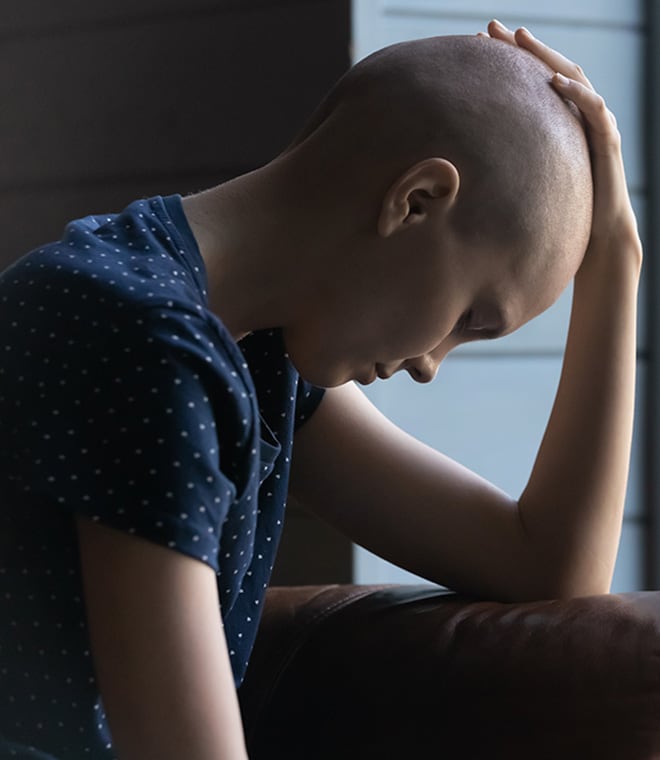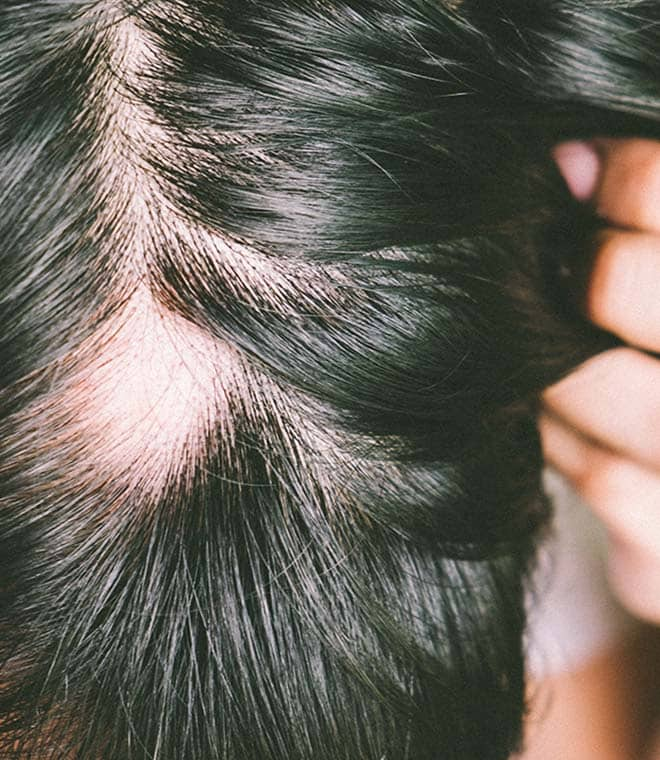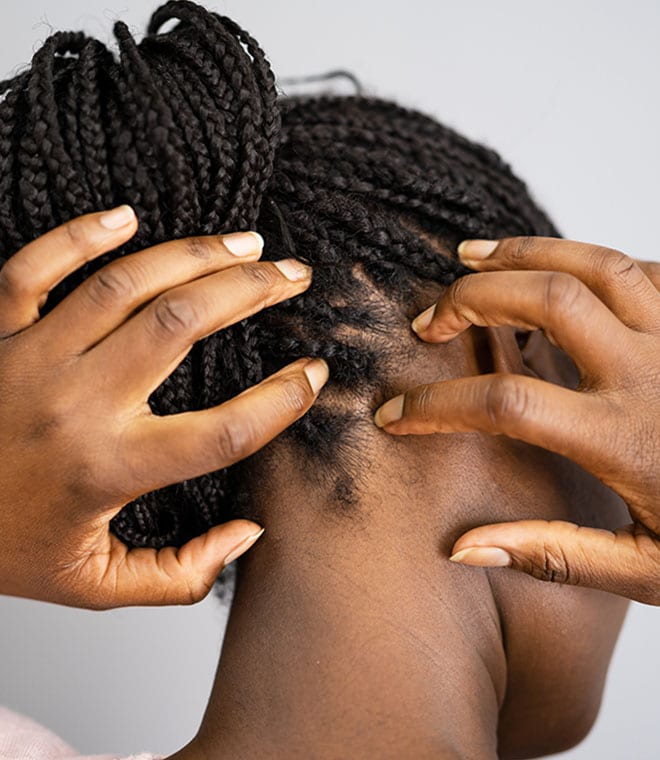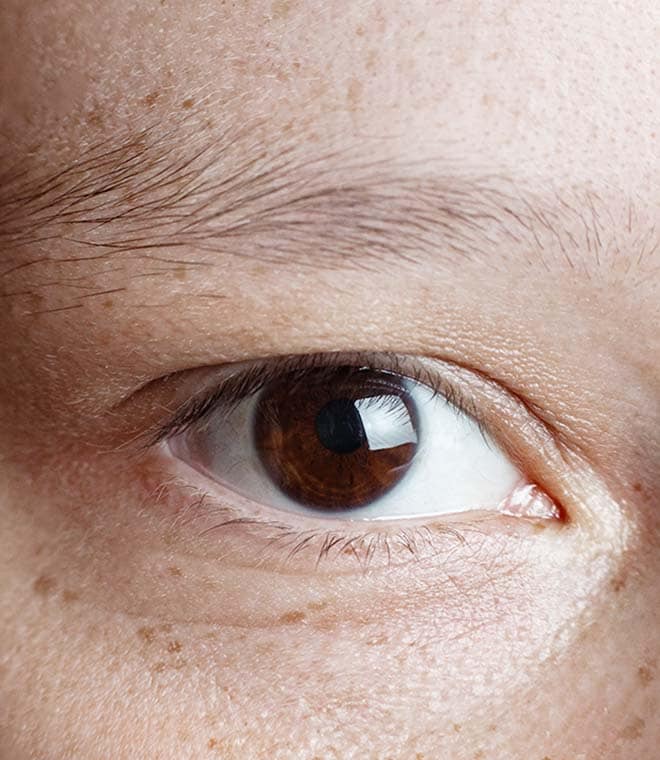Health
What can I do about my bald hair spot?
By Anna H. Chacon, MD, Fellow of the American Academy of Dermatology Jan 28, 2025 • 5 min
A bald spot on your head can be a distressing problem. Fortunately, self-care and at-home interventions can often address or hide bald head spots, and medical treatments may also improve the appearance of your hair.
What to do if you have a bald spot
There are many potential causes for bald spots. You could have a nutritional deficiency, a problem with your immune system, be in the first stages of hereditary hair loss or have another condition or concern. Specific treatments may be available, depending on the cause. For example, if a vitamin deficiency is responsible for your symptoms, your healthcare provider may recommend a supplement, or they may prescribe a corticosteroid for autoimmune hair loss. Other hair loss prescriptions are also available but vary by needs.
Topical over-the-counter medication
For many causes of bald spots, a topical treatment called minoxidil may reduce progressive hair loss and promote regrowth in the affected area. You can purchase over-the-counter minoxidil in liquid solution and foam forms, which are available for men and women in different concentrations. Most people need to apply minoxidil two to three times daily for three to six months before seeing regrowth. If the medication does cause hair to regrow on a bald spot, you will likely need to continue to apply it daily to maintain the growth. Some studies have shown that using low-level laser therapy may potentially help hair regrowth, in addition to daily minoxidil use.
Adopt a healthy hair care routine
Taking good care of the hair in the area surrounding your bald spot may help reduce further loss if the problem is due to scalp irritation or your styling routine. The following tips may help your hair and scalp health:
- Use a mild shampoo and follow every wash with a moisturizing conditioner
- Apply leave-in conditioners to keep hair hydrated and flexible
- Discontinue chemical treatments like hair color, perms and relaxers
- Avoid thermal styling tools like curling irons and flat irons as much as possible
- Allow your hair to air dry rather than blow-drying it
- If you do use a hair dryer, select the lowest heat setting
- Don't wear your hair in tight ponytails, braids, buns or similar styles that may pull on hair
- Comb and brush with a gentle touch and only when you need to style
- Spritz or rub in a detangler to help hair strands separate after washing
Examine your diet
Nutritional deficiencies and severe calorie restriction can contribute to hair loss. If you're trying to lose weight, make sure you maintain a sufficient daily calorie intake with essential nutrients. Consuming a variety of whole grains, lean protein, fruits and vegetables can ensure your body has access to the vitamins, minerals and other nutrients that are necessary for hair growth and health. If you’re considering taking an over-the-counter supplement, check with your healthcare provider first. Taking too much of certain vitamins and minerals may be harmful and may actually contribute to hair loss.
Conceal the area during regrowth
Hiding a bald spot on your head with a wig or hairpiece can boost your confidence while you use other treatments. If you have thinning in one particular area, you can apply powder or spray hair fibers that cling to your existing hair and create the appearance of thicker, fuller hair. These fibers come in a variety of colors and typically remain in place for one day. There are also camouflage products such as colored powders that cover your scalp with color, to help blend thinning areas of hair.
Consider a new hairstyle
Depending on the location and size of the bald spot, you may be able to conceal it with a new hairstyle. Find a hairstylist in your area who has experience working with people who suffer from hair loss. However, make sure your new hair style doesn’t pull too much and cause further stress on your hair follicles.
When to see your healthcare provider about hair loss
Your healthcare provider can run tests and review your symptoms with you to determine what might be causing your hair loss. Scheduling an appointment when you begin to notice thinning or discover a new bald spot on your head can help to ensure that you choose the right self-care and at-home treatments and receive the right clinical interventions for your specific type of hair loss.
Updated by Julie McDaniel, MSN, RN, CRNI, January 2025.
Sources:
- https://medlineplus.gov/ency/article/003246.htm
- https://www.aad.org/public/diseases/hair-loss/treatment/diagnosis-treat
- https://www.aad.org/public/diseases/hair-loss/treatment/tips
- https://www.mayoclinic.org/diseases-conditions/hair-loss/symptoms-causes/syc-20372926
- https://www.cancer.org/cancer/managing-cancer/side-effects/hair-skin-nails/hair-loss/coping-with-hair-loss.html
- https://www.health.harvard.edu/diseases-and-conditions/vitamins-minerals-and-hair-loss-is-there-a-connection
- https://www.mskcc.org/cancer-care/patient-education/hair-loss-cancer-treatment
- https://www.aad.org/public/cosmetic/safety/red-light-therapy




